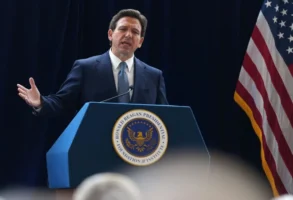
Published March 3, 2015
We now know that Hillary Clinton evaded government record-keeping and jeopardized national security by using a private email account while Secretary of State. Troubling as this incident is, it points to larger and more disturbing lessons about the woman who may become our next president.
As the New York Times piece that broke the Clinton email story notes: “The revelation about the private email account echoes longstanding criticisms directed at both the former secretary and her husband, former President Bill Clinton, for a lack of transparency and an inclination toward secrecy.” Yes, but why such secrecy to begin with? In part, of course, this is garden-variety political self-protection. Yet in the Clintons’ case—and particularly with Hillary—something more is at play.
Hillary’s penchant for secrecy has its roots in her decades-long efforts to disguise her power-sharing arrangement with Bill. For years she served as both unelected Arkansas co-governor and unelected American co-president. The public rightly frowned on this evasion of constitutional, electoral, and bureaucratic propriety, which in turn drove Hillary to obsessive secrecy and badly hampered the functioning of Clinton administrations at both the state and national levels.
Hillary’s vaunted executive experience is tainted and distorted by the fact that she was always an executive on the sly. Hillary’s confused and confusing power-sharing arrangement with Bill—and her need to disguise it—have gotten her into the habit of evading executive responsibility. She only knows how to govern under the radar and can’t seem to break the habit. Hillary’s defenders discount her early governing fiascoes and claim that they’ve only helped her learn what not to do. Yet this latest incident confirms that the habits behind Hillary’s early executive mistakes have not been broken.
The problems go back as far as Bill’s failed congressional campaign of 1974 and extend through a long series of cases in the Arkansas Governor’s Mansion and the Clinton White House. Typically, Hillary appeared on no flow chart and held no official authority, yet intervened to delay or reverse existing decisions, sowing confusion. Desperate to disguise the extent of her de facto power, Hillary was driven to an obsessive secrecy that only increased the administrative chaos.
When Hillary finally secured a formal role as leader of the health care initiative in the Clinton White House, the problem simply took on another form. Hillary circumvented the policy planning apparatus of the White House by creating an unwieldy and hyper-secret parallel health-care bureaucracy of her own. The result was political and administrative disarray.
With direct access to Bill putting her beyond any official White House record-keeping, Hillary grew used to acting without a paper trail. To avoid that eventuality entirely, she began disguising her West Wing activities by using White House staffers as proxies, creating further confusion.
Hillary also forced White House aides to spend endless hours “erasing her fingerprints” from controversial decisions like closing off the White House press corridor or firing White House travel office personnel to replace them with Clinton cronies. Vince Foster’s suicide may have been a direct result of Hillary’s attempt to evade responsibility for her own decisions. After erasing Hillary’s fingerprints from the travel office firings, Foster knew he’d be vulnerable to charges of having misled congressional investigators under oath.
In sum, Hillary’s disavowed co-presidential role was at the root of what Carl Bernstein has called “the unprecedented disarray of the early Clinton presidency.”
After the 1994 Republican congressional victory, Hillary’s subterfuges grew more bizarre. When the Clintons brought in Dick Morris as a kind of shadow Chief-of-Staff, Hillary managed the move. Fearing a rebellion by staffers, Hillary instructed Morris to visit the White House only at night. No records of his activities were to be kept. If it became necessary to phone during the day, Morris was to identify himself as “Charlie.” Hillary moved to cover Morris’s tracks when staffers got suspicious. The result was the virtual existence of two White Houses, and more deep administrative confusion. Top Clinton advisor George Stephanopoulos called it “a covert operation” against the Clintons’ own White House, “a commander’s coup against the colonels.”
As Hillary’s co-presidential role went even further underground after the 1994 election, her use of staff proxies and her evasion of paper-trails through direct contact with Bill only increased. (I tell the story of Hillary’s co-presidential secrecy, and the chaos it spawned, in “Deja Two”).
So Hillary has a deep-lying habit of stealth. She does indeed have long-standing executive experience of a sort, yet that experience has ingrained in her a tendency to evade executive responsibility and transparency. The consistent result has been administrative chaos. Should Hillary win the presidency and share executive power with Bill, the same confused and deceptive mess will return. Forgetting the chaos of the first Clinton co-presidency, the public mistakenly takes heart at the idea of Bill’s calming and experienced presence. What we shall see instead is a repeat of the worst characteristics of the first Clinton co-presidency, with secrecy, a divided presidency, and administrative confusion aplenty.
— Stanley Kurtz is a Senior Fellow at the Ethics and Public Policy Center.




